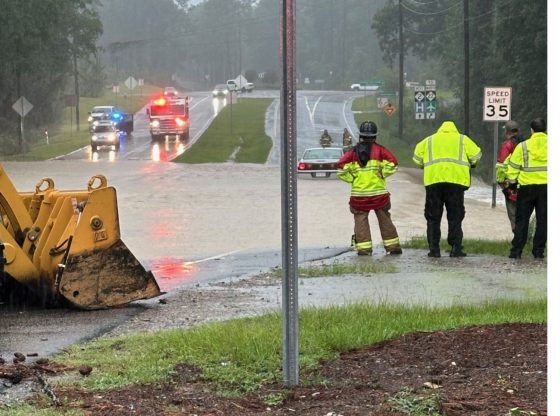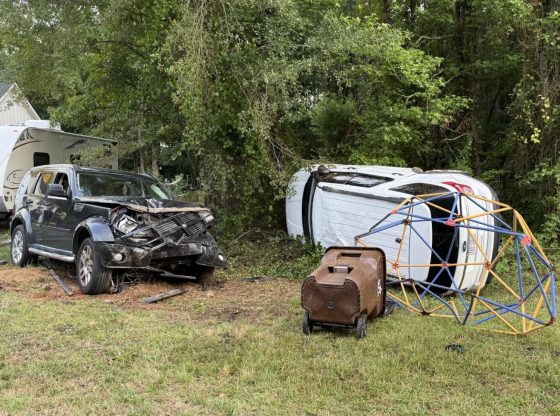RALEIGH, N.C. (AP) — Leanna Lamatrice and her family typically didn’t pay much attention to the warnings about rip currents off North Carolina’s Outer Banks.
It was a mindset that began in childhood, when her family would spend two weeks every summer in Hatteras village, and carried into adulthood. “And then it happened,” said Lamatrice.
In the summer of 2016, a rip current pulled her husband and son further from shore. Fortunately, a bystander threw them a boogie board, and the two got to shore safely. But her then 10-year-old son was terrified of the water after that.
When the family of four from Powell, Ohio, returned in 2017, they took rip current training offered by the Hatteras Island Rescue Squad each Monday morning beginning with the traditional start and end of the summer vacation season, Memorial Day through Labor Day. The training, combined with the rip current forecast that the rescue squad posts daily on its Facebook page, worked for her son.
When the rip current threat was moderate, “he was much more willing to go in the water,” Lamatrice said.
The classes are one of several ways that beachgoers can learn about rip currents , which are narrow channels of water that can move as fast as 8 feet a second and occur at any beach with breaking waves, including the Great Lakes. They’re deceptive because they appear as a break in the waves, making them seem like a safe place to play.
At least 25 people were rescued from rip currents off the Carolinas’ coast in one day in June; at least two deaths have been attributed to rip currents in North Carolina this month. The most recent death was of a Virginia man who bystanders said was trying to save his daughters from a rip current.
The first rule for swimmers caught in a rip current: stay calm. Experts recommend that people caught in a rip current should swim parallel to the shore until they’re out of its pull. The U.S. Lifesaving Association estimates rip currents account for more than 80 percent of rescues performed by surf beach lifeguards.
“No matter what happens, the victim has the best chance of recovering if they can avoid overexertion, and panic often drives that,” said Spencer Rogers, a specialist in coastal processes for North Carolina Sea Grant .
To help someone caught in a rip current, experts recommend throwing a flotation device such as a boogie board or an empty cooler to the victim before jumping in the water. If you must jump in, take the flotation device with you.
The rescue squad began the training last year and offers it again in 2018. The classes are held in Buxton on Monday mornings in hopes of catching as many tourists as possible at the start of their vacation weeks since they typically check in on weekends, said Jack Scarborough, the island’s rescue squad chief.
Hatteras Island is part of the Cape Hatteras National Seashore , where the National Park Service places rip current warning signs at parking and beach walkover areas.
The National Weather Service in Wilmington has kept track of deaths by natural disasters in North Carolina and South Carolina for 17 years. The figures collected by Steve Pfaff, warning coordination meteorologist, show that between 2000 and 2017, rip currents have killed more people in the two states (123) than flooding (52), lightning (44) or tornadoes (34).
Rescuers said they understand the pull to try to swim out and rescue someone. But a safer response is to throw a flotation device such as a boogie board or an empty cooler to the person caught in the rip current before jumping in the water. Or take a flotation device with you if you must rescue someone.
“Hold onto it and float,” Rogers said. “Sooner or later, you can work your way out of it.”
Copyright 2018, The Associated Press. All rights reserved.


















